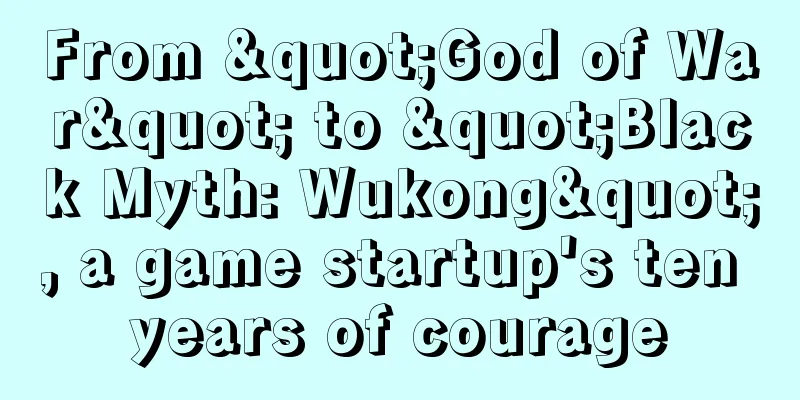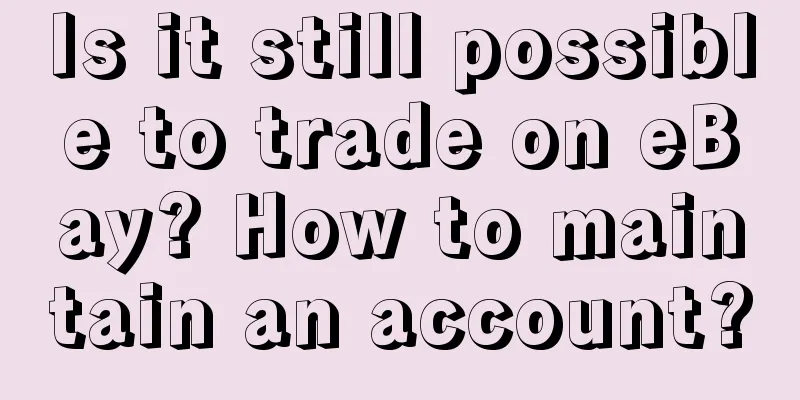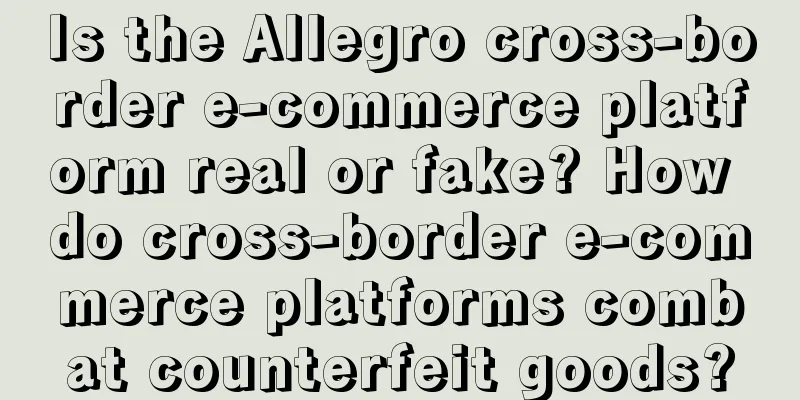What is Marketing Automation MA? How to build a good marketing automation system

Marketing Automation (MA for short), although this concept has been around for decades, it has not been very popular in the early years. It is only in recent years that this concept has begun to spread widely. So what is marketing automation? 1. What is Marketing Automation?The explanation given by Salesforce abroad: Marketing automation is a software platform that helps marketers automatically complete marketing and sales activities to generate more leads, facilitate transactions and accurately measure success. The explanation given by domestic Sensors Data is: an automated operation platform that integrates event creation, execution, management, feedback, and iteration. It can screen audiences through data such as user behavior, attributes, and tags, achieve accurate reach of the target population, and improve key indicators and operational efficiency. In plain English: Marketing automation allows the right people to reach the content they are interested in at the right time in a more efficient way, thereby improving customer experience and driving business growth. 2. The Value of Marketing AutomationLet me describe a scenario first, and then you will understand the value of marketing automation. Mr. Zhang, who operates the computer and digital category of an e-commerce platform, wanted to organize an event for freshmen at the beginning of the school year, so he first went to the data team to find someone to get the target customer package, and then went to the R&D team to help configure the event background rules and front-end pages, and then did the event push, that is, user reach. If the whole event goes well, it will take at least one week. The key is that the platform has many categories of operations, and there are a lot of operational activities waiting to be developed and scheduled. This time Zhang San was lucky to get it scheduled in a week, but it may not be so smooth next time. This traditional marketing activity process and method is mechanical and repetitive, and extremely inefficient. If you want to do this operation well and achieve a complete closed loop of activity operations, you need to include the following links: setting goals -> program planning -> technical implementation -> effect evaluation -> strategy optimization, and the workload here will be greater. Marketing automation can reduce repetitive work, lower operating costs and improve conversion efficiency through automated tools and processes. The key to marketing automationMarketing automation MA sounds very grand and may make people feel daunted, but in fact, marketing automation is not as obscure as imagined. Its keyword business process consists of the following 4 steps. 1. Develop an event strategyTaking the e-commerce platform we are most familiar with as an example, we can set different operation activity strategies according to different operation scenarios or the life cycle stage of the user. For example, for new customers who have not placed an order after registration, those who have not used the coupons after receiving them, those who have not paid after submitting the orders, those who have not logged into the platform or repurchased for more than X days, etc., we can set corresponding operation activity strategies. For example, when a new product is launched on the platform, we need to carry out promotion activities, such as special offers/flash sales/pre-sales. For some slow-moving products that need to be cleared out of stock, we may need to implement promotion activities such as full discounts, full discounts, full gifts, additional purchases, and M yuan for N items. You can also design operational activity strategies according to the life cycle AARRR model, thereby covering the links of Acquisition (acquiring users), Activation (increasing activity), Retention (increasing retention rate), Revenue (obtaining revenue), and Refer (communication). The above content needs to be implemented in conjunction with the marketing activities. I have mentioned the 18 ways to play marketing activities in my previous article "A 10,000-word article: Building a marketing activity system and 18 ways to play activities", so I will not repeat it here. The following is the activity strategy of a financial product, which sets different activities based on the user’s life cycle node or status in the product. 2. Accurately screen customersNow, both B-end and C-end platforms are beginning to move towards refined operations, and the starting point of refined operations is to accurately identify and screen customers. Why do we need to do precise screening instead of flooding? We can give an example to illustrate this.
The above data is only one aspect. Assuming that push notifications reach users via SMS, and each SMS costs 0.03 yuan, the cost of full push notifications is 3,000 yuan, and the cost of precision push notifications is only 600 yuan. In this way, the return on full push notifications is extremely low and may even be negative, or in other words, only activities with a return rate of 3,000/8,000=37.5% or above will not lose money. Secondly, full push also brings extremely bad user experience. Most of the extra 80,000 users may not be our target users. In addition to wasting marketing costs, it also causes great interference to users. After many times, many users will inevitably uninstall the product. So how do we accurately screen customers? Perhaps we can combine a series of screening conditions to predict who our target user group is and how large it is. This involves the support of user tag systems and systems such as CDP and DMP. For example, we can comprehensively identify customers based on user static tags and behaviors. For financial products, our static tags can be asset level, whether it is a new customer, whether it is an effective customer, education level, age, etc. User behavior can be visiting the financial activity page N times in the past XX days, viewing a certain financial product N times, having purchase records of other financial products, etc. Taking the e-commerce platform we are familiar with as an example, we can circle customers according to the specific goals of the operation activities, such as "membership level = senior member, successful payment amount > 100 yuan" and other screening conditions to circle the customer group. For example, after the iPhone 16 is launched, we can use "purchase record includes iPhone, number of purchases >= 1 time, purchase time = the last 2 years" to filter out the target group of iPhone, and then recommend new product purchases or replacement activities to them. Operations staff can complete the selection and creation of customer packages by clicking on the above visualization page, and then the system can automatically estimate the range of the number of people in the customer package, for example, the user group that has purchased iPhones in the past two years is 1,200. If operations staff think that the number of people in this customer package is a bit small, they can adjust the time span to 3 years and add iPad to the purchase record, so that the number of people in the new customer package may reach 3,000. After completing the precise screening and creation of the customer package, the system will generate a customer group package, so that you can directly select the customer group package when configuring the marketing activity, and then complete the creation of the activity. This customer group package can be a static customer group package, that is, the number of customers is fixed, or it can be a dynamically changing customer group package. The above visual method of selecting customers seems to be easy to use, and is actually not complicated to use. However, some companies that I have experienced and understood do not have the ability to do this, but they still have to carry out operational activities. What should they do? This is not a problem for our operations colleagues. If the system is not enough, we can fill in the gap manually. Operation colleagues can find data analysts or developers to write SQL to pull out an Excel table of the list of users who meet the conditions, and then associate this Excel file when configuring active users. After the target customers are screened, these users will be reached through various means. Some of them may ignore the event and not participate, while some customers may participate in the event to complete the conversion. Whether the customer participates or not, they need to be marked accordingly and then uniformly returned to the full user pool. For customers who did not participate in the event, when planning the next operation activity and doing precise user screening, you need to consider these users who have been invited but did not participate. Customers who have been invited many times but have never converted can be considered to be eliminated when conducting precise screening of target customers. Or for customers who were invited but not converted in the first time, when planning the second activity to accurately screen users, try to use a method with a higher conversion rate to reach users. For example, the first time you reach out through ICC smart voice calls, the second time you can reach out through mobile phone text messages, and if the conversion is still not completed, you can use manual outbound calls for the third time. 3. Reach out in multiple waysAfter the activities and customer groups are created, the next step is how to push the activities to target customers. There are several common ways to reach customers on the market, each with its own advantages and disadvantages and applicable scenarios.
The following are the characteristics of various contact methods summarized by Way, the author of Everyone is a Product Manager, for reference. In addition, some platforms or companies will establish a large number of enterprise WeChat customer groups, and will reach users through various means such as enterprise WeChat group messages and Moments. There will also be some SaaS software products such as SCRM. I will write a separate article to talk about SCRM later. There are also some specific contact rules configurations for each contact method. You can set whether to contact repeatedly or once. In the repeated contact mode, you can also mark it after a certain contact or conversion is successful to avoid disturbing the user. APP push can also set a certain time period, such as 22:00-07:00, to not contact, and you can set the number and frequency of contacts. 4. Operational effect analysisWhether the marketing activities are successful, whether the ROI is in line with expectations, and whether the activity budget has been exceeded, all these require operational data statistical analysis reports. Without data reports, it is impossible to analyze the effectiveness of the operational activities well, and it is impossible to know which link of the many nodes of the activity has a low conversion rate, and it is also impossible to know how to improve the next activity. For example, an e-commerce platform conducted a high-intent customer conversion promotion activity for potential customers, and gave these customers a 100-yuan discount coupon. The operator needs to understand the following data:
Marketing automation cannot be separated from the support of data, and data cannot be separated from the four aspects of having data, viewing data, analyzing data and applying data. All companies have different degrees of problems at each stage, as shown in the figure below. The above four modules combined together constitute the entire process of marketing automation. Some companies or products may do well in a single module, but the other parts are relatively poor, which in turn affects the use of the entire marketing automation. 4. Marketing Automation for Users and ContentThe above are all marketing automation based on the activity level, which is applicable to the activity operation of most products on the market. But it may not be so useful for some other scenarios. I believe many people have used travel apps such as Ctrip and Fliggy. When you search for a hotel in a certain place or a train ticket or air ticket between two places in an app, you leave or close the app. After a few minutes, you may receive a ticket coupon worth XX yuan, an airport pick-up coupon, and a parent-child travel guide for the destination. When you open the app again, the homepage information flow will load hotels near the destination and filter by price based on your historical hotel consumption level. In the past traditional marketing model, your marketing activities were always lagging, and there was no way to achieve such real-time, high personalization and customization. However, based on the premise of marketing automation, all of the above have become possible. In just a few minutes, the system reports and performs big data analysis on your browsing behavior, historical consumption data, and operation records, and then matches them with dozens or hundreds of operational strategies or content that run automatically in the background, generates push content, and reaches you. These can be seen as travel products with different faces for different people, or as user-based marketing automation, that is, the product will automatically generate recommended content based on user behavior, which can reach you through SMS and Push, or can be actively presented to you when you enter the product again. The above scenario can be regarded as fully automatic marketing automation triggered by user behavior. In fact, there are also some semi-automated marketing automation scenarios in the process of operational promotion, especially in the conversion of leads. For example, an educational institution or automobile manufacturer collects customer information (contact number, name) through various channels, and then can use SCRM to automate content marketing throughout the user's life cycle. For example, the SCRM product can be configured with a set of customer portrait stratification standards based on the customer life cycle, and then manually divide customers into the following stages: customer leads -> initial online communication -> store visit -> test drive -> order -> car pickup. At each stage, the best content prepared in advance is preset, and then when the customer triggers the sending conditions, the corresponding message content is automatically sent to the target customer. For example, content 1 is sent at 09:00 one day after the customer adds the corporate WeChat, content 2 is sent at 10:00 on the second day, and content 3 is sent on the fifth day. This forms a daily customer operation and contact content system. The above configured content SOP has three key points: push content (what to send), time strategy (when to send), and contact form (private chat or Moments). This push content sequence SOP can last for as short as 2 weeks or as long as more than 1 year. Some readers may wonder, wouldn’t it cause harassment to customers if so much content is sent to them so frequently? The answer is no. The above SOP only triggers messages to eligible customers (such as sending messages at xx o'clock on the first day after adding them). It achieves precise message reach rather than mass messaging to all employees. The overall customer pool will not be affected and no unnecessary harassment will be caused. The SOP can also sort out customer cultivation content, customer conversion content, sales conversion enhancement scripts, silent customer activation content, 1v1 private chat content, content sent to Moments, and greeting guidance content according to the customer's life cycle stage, to ensure that the value of each link and each touchpoint is delivered in place and the customer experience is enhanced to the best state. However, many SCRM tools on the market do not perform well in this regard, and I often receive content that is sent to all employees in a group. V. ConclusionI mentioned this point before: in the current era, the user experience and business processes of many products may become more and more homogenized, and the differences will become smaller and smaller. It is difficult to make a product stand out from the product strength. Therefore, whether a product can go further and more steadily in the competition is more inclined to operation. In the early years of the traffic dividend era, marketing and operations could be done in any way without much problem. But today, if we still operate in a crude and fully manual way like before, it will definitely not work. In the foreseeable future, marketing automation will become increasingly important, just like layered operations, refined operations, and user growth. Author: Mr. Zhan, public account: Mr. Zhan |
<<: Data drives business growth, real cases are here!
>>: My favorite method for selecting popular topics! It’s amazing.
Recommend
Tour guide Xiao Qi gained millions of followers overnight, travel agency MCN "breaks through" Douyin?
Recently, the discussion about Xinjiang tourism ha...
How to make your brand younger
After a company's brand enters the mature stag...
10 yuan for two meals, young people love "leftover blind boxes"
Everyone is familiar with "blind boxes",...
Museum cultural and creative products are focusing on live streaming e-commerce, but are the things that sell well the “ugly things”?
This article explores in depth how museum cultural...
In 2025, the more local businesses are, the more they need to promote themselves.
In 2025, local businesses will face more intense m...
Xiaohongshu, the most suitable platform for Chinese lululemon from 0 to 1
As an emerging content e-commerce platform, Xiaoho...
With its frequent collaborations, has Moutai captured the hearts of young people, or is it over-consuming the brand?
Recently, Moutai has been involved in more and mor...
Where can I find Amazon's off-site traffic? How can Amazon get more traffic?
Traffic is very important for stores. After all, s...
How can Chinese brands take root in the Japanese market? A conversation with Xidao Consulting, ROMOSS, and Hesheng
As Japanese consumers' awareness of Chinese br...
Why has the business of Dali’s travel photo studio gone so bad?
The Dali travel photography market is in a state o...
Why can’t I make money by writing headlines?
This article is based on the author's own expe...
Different Women's Day copywriting, no need to please women like this!
As the International Women's Day is approachin...
How to merge two listings on Amazon? Detailed tutorial
Each product on Amazon is a separate listing. If y...
Where is the entrance to shein cross-border e-commerce platform? What are its advantages?
Shein is one of the best-developed cross-border e-...
Practical thinking | Unraveling the mystery of operational transformation
Editor's note: There are many carriers for ent...









